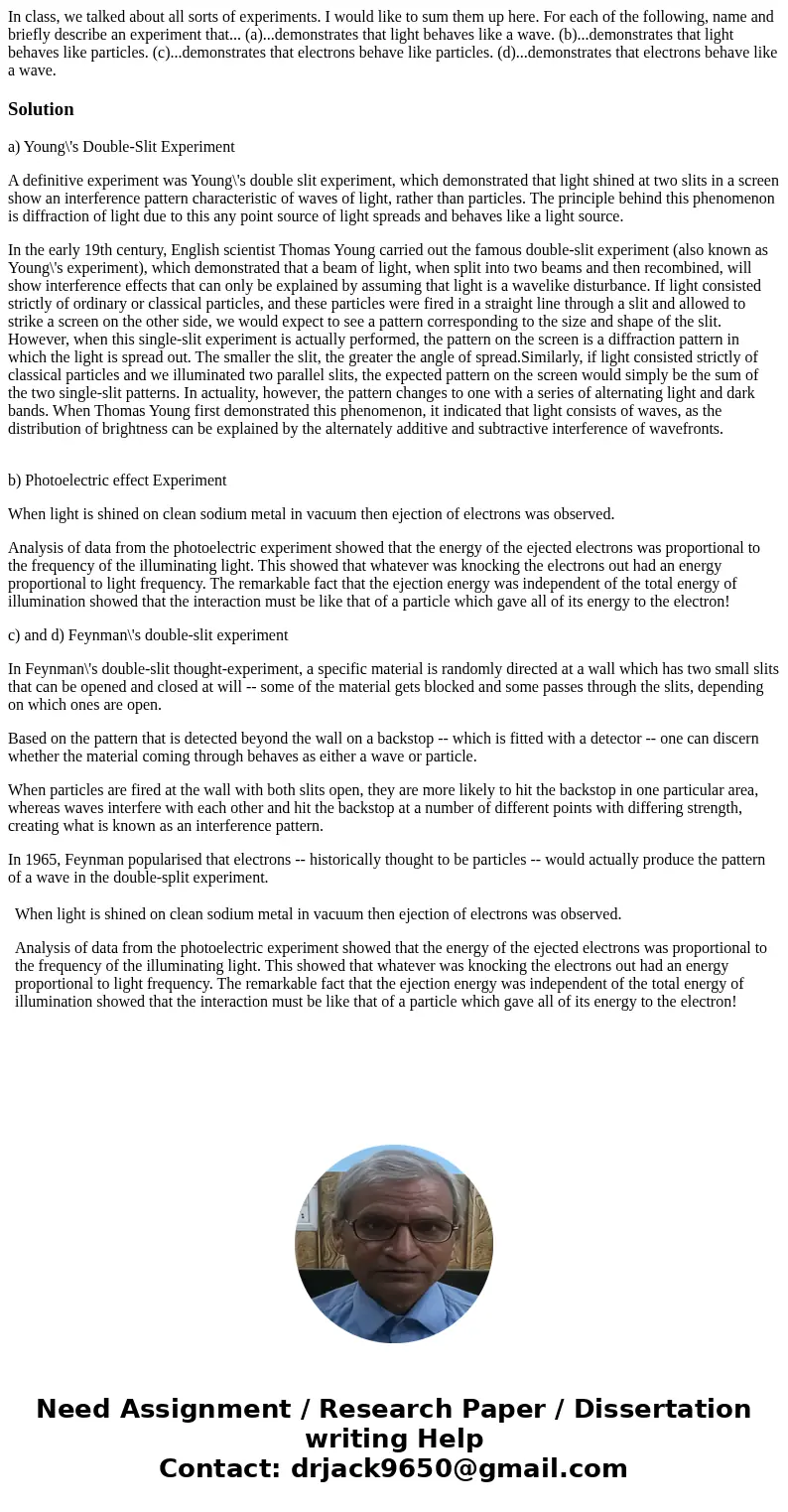In class we talked about all sorts of experiments I would li
Solution
a) Young\'s Double-Slit Experiment
A definitive experiment was Young\'s double slit experiment, which demonstrated that light shined at two slits in a screen show an interference pattern characteristic of waves of light, rather than particles. The principle behind this phenomenon is diffraction of light due to this any point source of light spreads and behaves like a light source.
In the early 19th century, English scientist Thomas Young carried out the famous double-slit experiment (also known as Young\'s experiment), which demonstrated that a beam of light, when split into two beams and then recombined, will show interference effects that can only be explained by assuming that light is a wavelike disturbance. If light consisted strictly of ordinary or classical particles, and these particles were fired in a straight line through a slit and allowed to strike a screen on the other side, we would expect to see a pattern corresponding to the size and shape of the slit. However, when this single-slit experiment is actually performed, the pattern on the screen is a diffraction pattern in which the light is spread out. The smaller the slit, the greater the angle of spread.Similarly, if light consisted strictly of classical particles and we illuminated two parallel slits, the expected pattern on the screen would simply be the sum of the two single-slit patterns. In actuality, however, the pattern changes to one with a series of alternating light and dark bands. When Thomas Young first demonstrated this phenomenon, it indicated that light consists of waves, as the distribution of brightness can be explained by the alternately additive and subtractive interference of wavefronts.
b) Photoelectric effect Experiment
When light is shined on clean sodium metal in vacuum then ejection of electrons was observed.
Analysis of data from the photoelectric experiment showed that the energy of the ejected electrons was proportional to the frequency of the illuminating light. This showed that whatever was knocking the electrons out had an energy proportional to light frequency. The remarkable fact that the ejection energy was independent of the total energy of illumination showed that the interaction must be like that of a particle which gave all of its energy to the electron!
c) and d) Feynman\'s double-slit experiment
In Feynman\'s double-slit thought-experiment, a specific material is randomly directed at a wall which has two small slits that can be opened and closed at will -- some of the material gets blocked and some passes through the slits, depending on which ones are open.
Based on the pattern that is detected beyond the wall on a backstop -- which is fitted with a detector -- one can discern whether the material coming through behaves as either a wave or particle.
When particles are fired at the wall with both slits open, they are more likely to hit the backstop in one particular area, whereas waves interfere with each other and hit the backstop at a number of different points with differing strength, creating what is known as an interference pattern.
In 1965, Feynman popularised that electrons -- historically thought to be particles -- would actually produce the pattern of a wave in the double-split experiment.
| When light is shined on clean sodium metal in vacuum then ejection of electrons was observed. Analysis of data from the photoelectric experiment showed that the energy of the ejected electrons was proportional to the frequency of the illuminating light. This showed that whatever was knocking the electrons out had an energy proportional to light frequency. The remarkable fact that the ejection energy was independent of the total energy of illumination showed that the interaction must be like that of a particle which gave all of its energy to the electron! |

 Homework Sourse
Homework Sourse